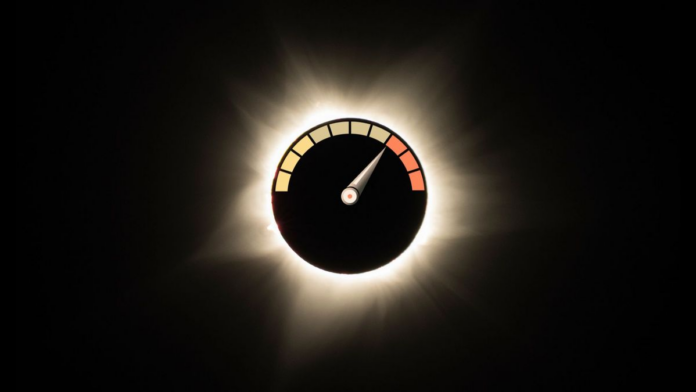When the moon’s shadow races across Earth on April 8 during the total solar eclipse, it will travel faster than the speed of sound.
It will sweep across Earth at more than 1,500 miles (2,400 kilometers) per hour on April 8, according to NASA .
However, exactly how fast it will move where you are will depend on where you are.
Related: Total solar eclipse 2024: Everything you need to know
Understanding the moon’s shadow
A solar eclipse occurs on Earth when a new moon blocks at least part of the sun, as seen from Earth. All solar eclipses project a large fuzzy shadow onto Earth called the penumbra. From within it, observers see a partial solar eclipse, watching the moon gradually block some of the sun before gradually moving away.
Only during a total solar eclipse , when the moon blocks all of the sun , does a smaller, darker conical shadow called the umbra project onto Earth. This is the path of totality, and from within it, observers see partial phases on either side of a total solar eclipse.
Distance and speed of the moon
The umbra passes over Earth during the total eclipse on Monday, August 21, 2017. (Image credit: NASA Johnson/Flickr)
The width of the umbra (the path of totality) and the penumbra (the partial eclipse zone) depend on the moon’s distance from Earth during the eclipse. This also affects the speed at which the shadow moves, as does the rotational speed of the moon and the Earth. The moon is orbiting Earth from west to east, the same way Earth rotates, but the moon moves more quickly.
Get the Space.com Newsletter Breaking space news, the latest updates on rocket launches, skywatching events and more! Contact me with news and offers from other Future brands Receive email from us on behalf of our trusted partners or sponsors
The penumbral and umbral shadows of the moon are projected as a path because Earth rotates under the faster-moving shadow of the moon. So, although the moon’s shadow moves across Earth very quickly during an eclipse, it’s counteracted by the Earth’s rotational speed.
Why it slows down and speeds up
Although the moon’s shadow would move even more quickly across the planet if it weren’t rotating, on April 8, that shadow will still move exceptionally fast. However, it won’t travel at a consistent speed.




